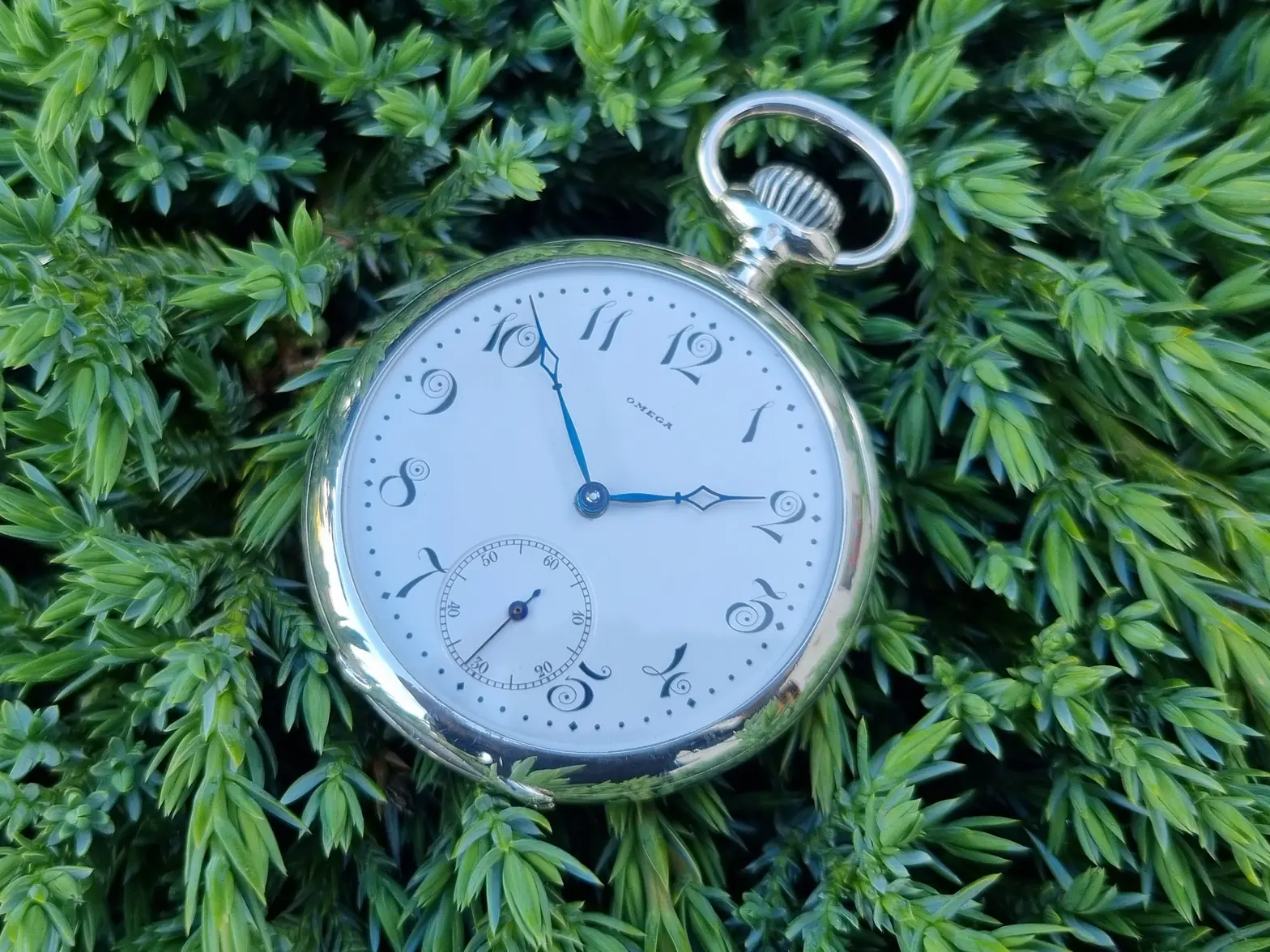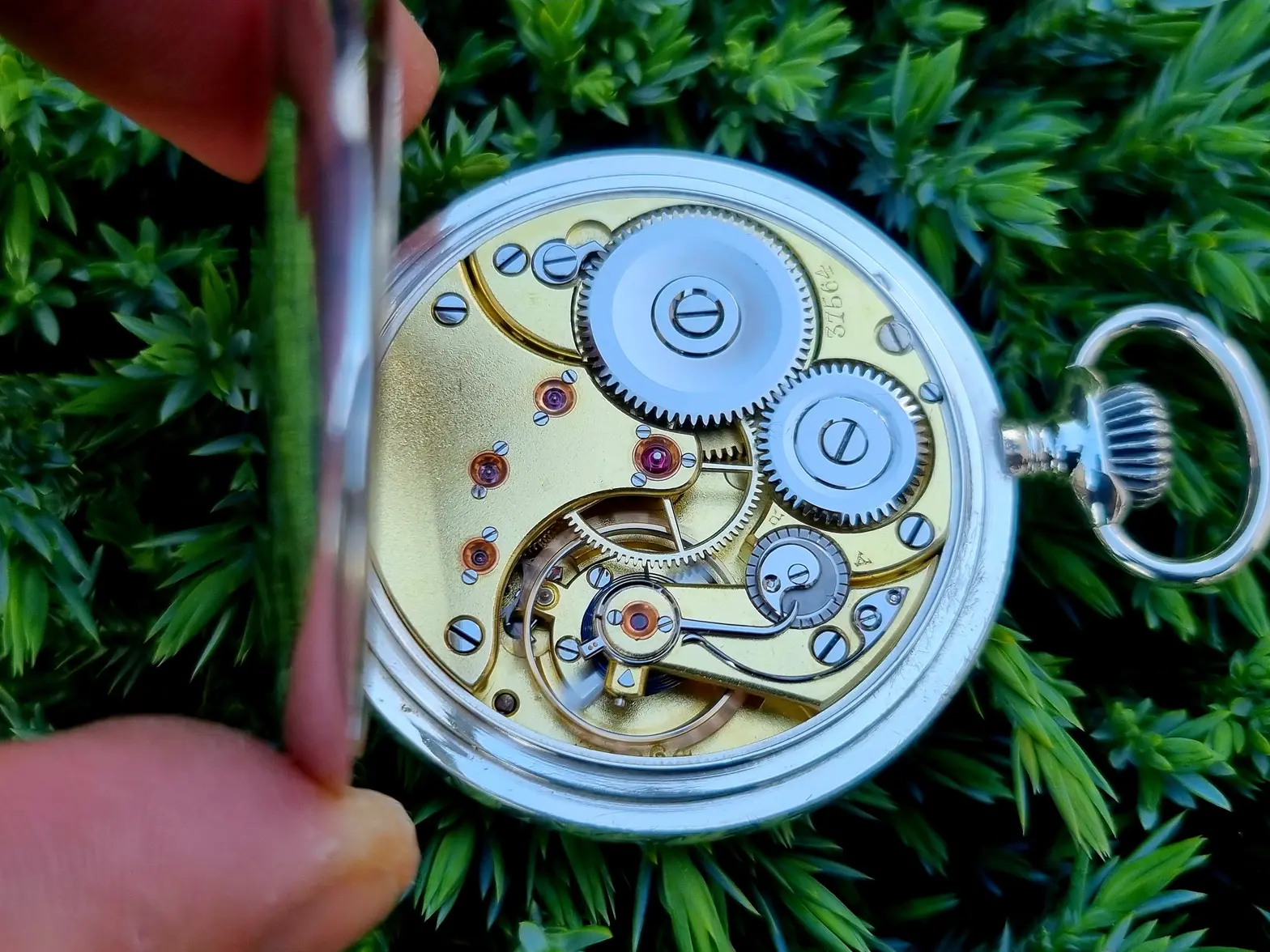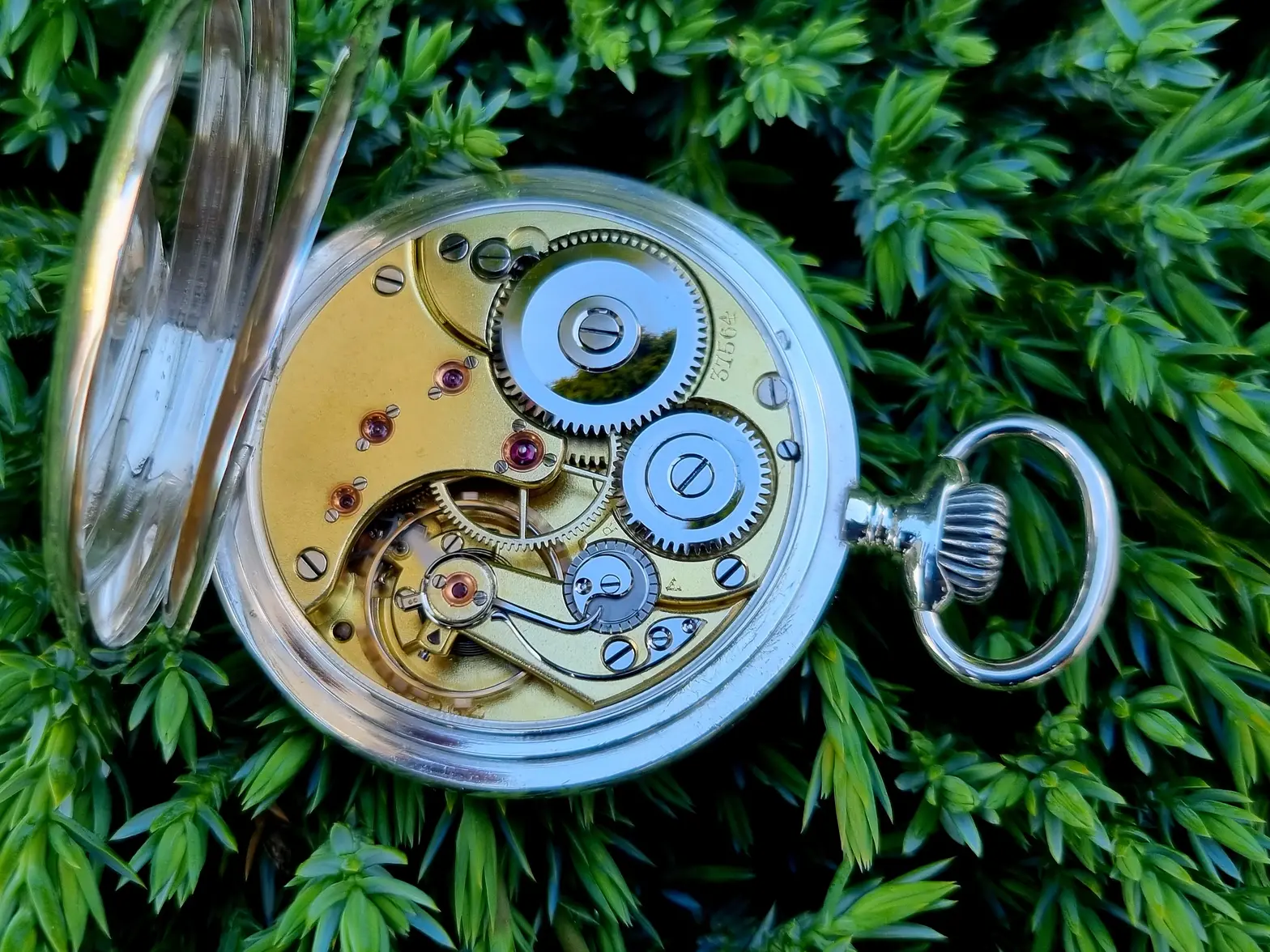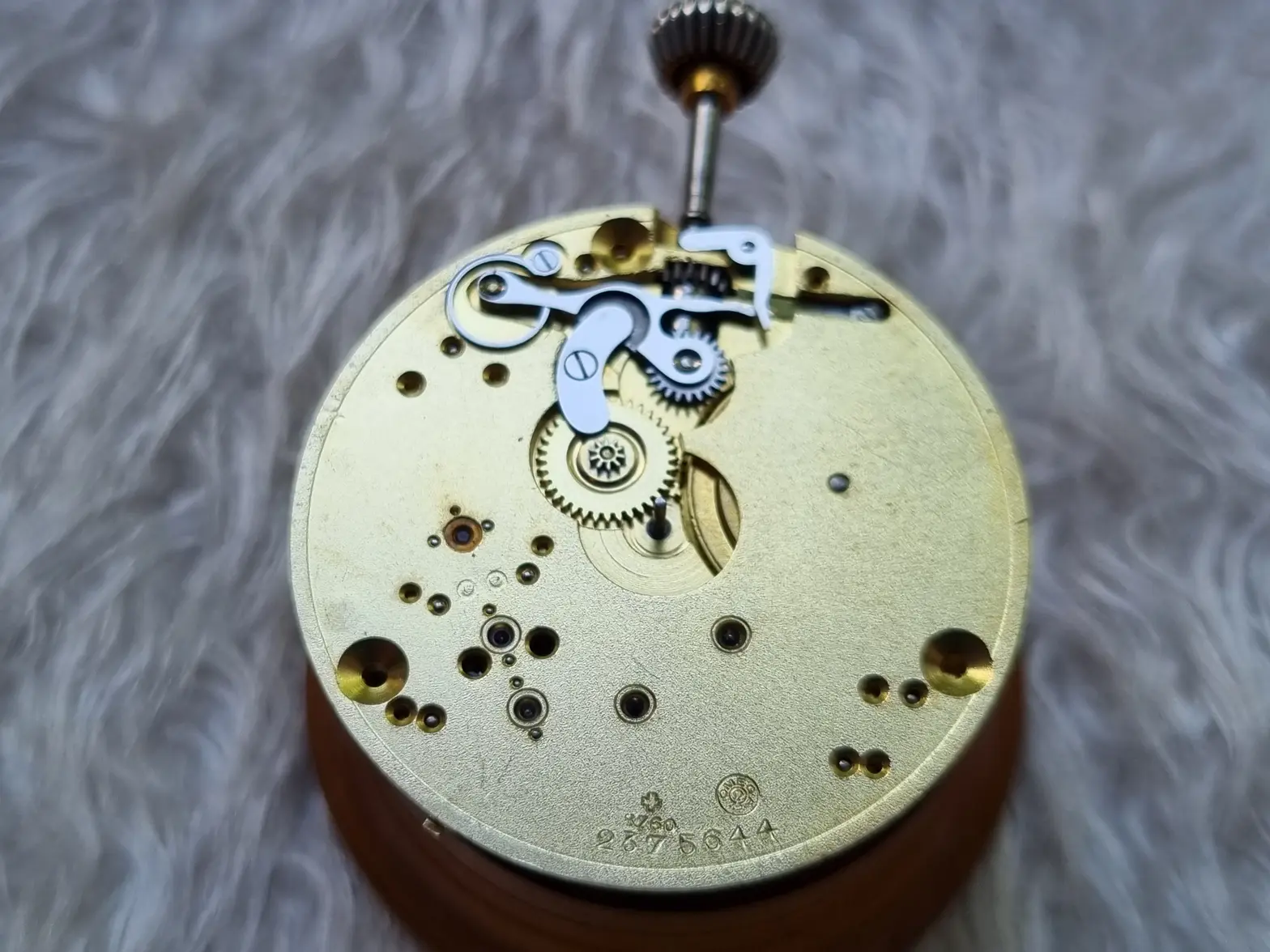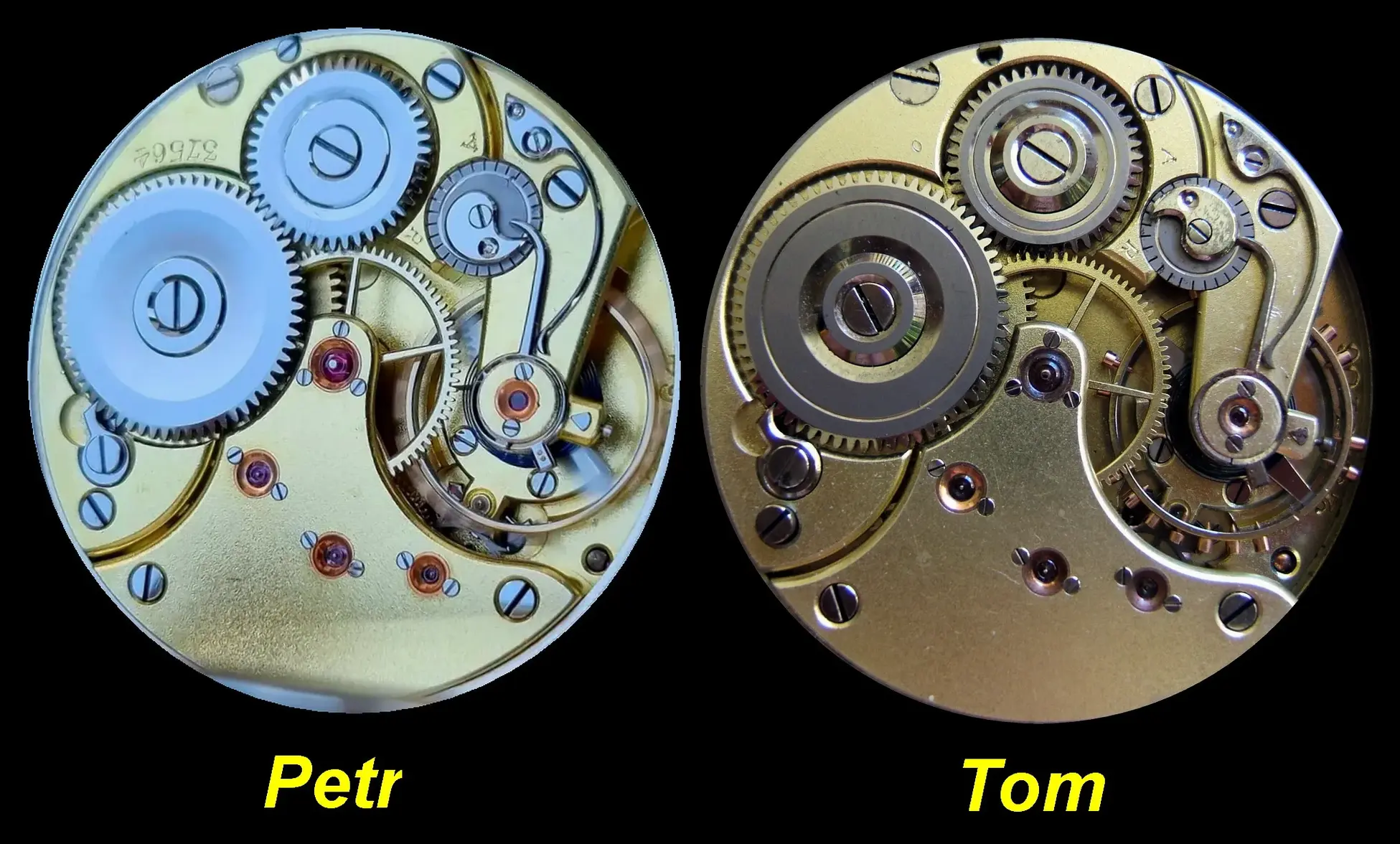Thank you Jim
@JimInOz for the link.
Thank you Petr
@zemic11 for showing your lovely watch.
In my opinion, the watch calibre is Omega 19’’’D. It is not an Omega case (as Jim mentioned).
I have an Omega 19’’’D watch with a similar (7-digit) movement number, also with a case which is not Omega (the case on mine is not silver and has a screw-back) - and I was told (by Omega Heritage) that the movement was probably sent to US or Canada, dating 1906.
I am not familiar with this type of dial. The hands are known as ‘No.10 Romaine’.
In the following image I compare my watch with that of Petr:
A difference is the number 37564 which appears next to the crown wheel on Petr’s watch.
My suggestion is that the casemaker chose to put the number 37564 on his case and also on the movement - and that this number was not put on the movement by Omega.
I do not understand how the number under the balance can be 37564 and not 2375644 - which would be the Omega ‘standard’, as occurs on my movement.
I do not subscribe to Jim’s suggestion that the number 37564 was put on the movement and case by Omega's "chronometer department". On the Omega watches for observatory competitions, the movement number was visible twice on the movement - thus under the balance and also on the plate - but this was not the case on the finest of the chronometer calibres such as the 47.7 or 60.8, where the movement number was visible only under the balance. In my opinion, this number (37564) was not put on the movement (next to the crown wheel) by Omega.
Regarding the subject of railroad grade watches, mentioned above by
@Canuck, it is hardly relevant here. Regulations introduced by authorities (such as railroad companies) were to ensure safety, and in addition to accuracy (for example a maximum of 30 seconds variation in a week) there was a requirement that they were lever set. Even the very finest Omega chronometers that (for example) won observatory competitions were stem-set: they were not intended for railroad use and would not have met the standards required by railroad regulations - but only because they were not lever set: in terms of accuracy, they were way beyond the required accuracy standards.
To quote Marco Richon in AJTT (page 168) when he describes the Omega DDR, it was “The pinnacle of mechanised horology, no calibre of this quality had ever been produced in a factory!”.



